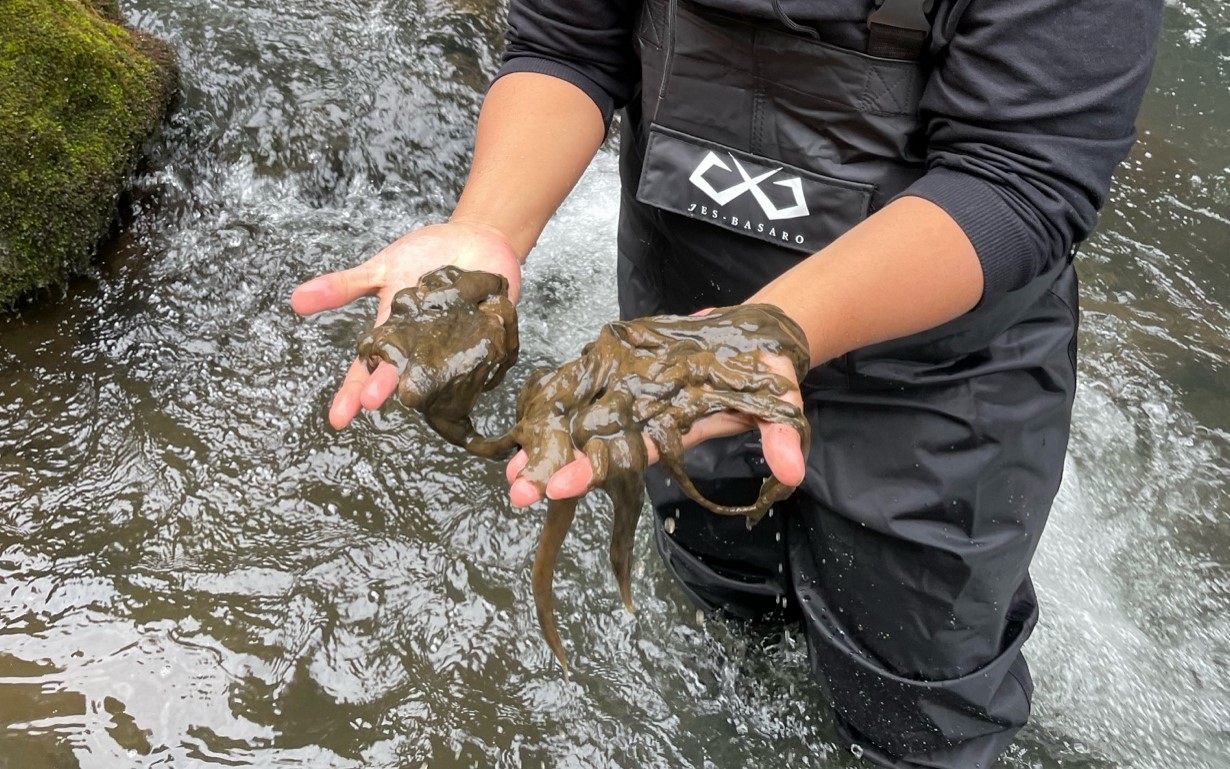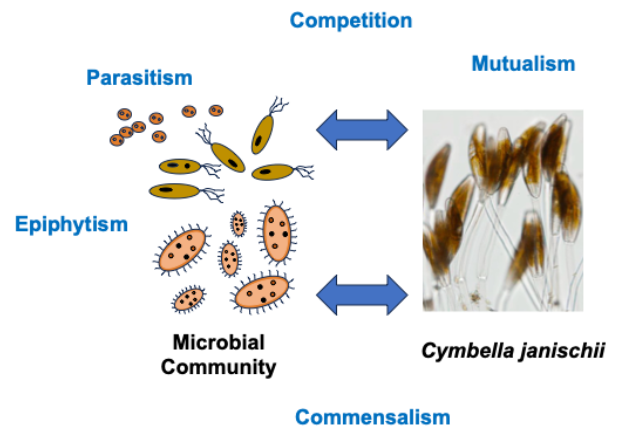Microscopic Gatekeepers: How Bacteria Shape the Fate of an Invasive Diatom
Published in Microbiology

In freshwater ecosystems, diatoms are ecological linchpins—microscopic photosynthetic organisms that power food webs and contribute significantly to global primary production. But what happens when these silent carbon-fixers start behaving invasively? Our study turns the spotlight on Cymbella janischii, a benthic diatom increasingly observed forming dense mats in Japanese river systems. These blooms aren’t just biological curiosities—they can alter local biodiversity and affect nutrient dynamics. Yet, surprisingly, C. janischii doesn’t do this alone. It’s helped—or hindered—by its associated bacteria.
In our recent study, we explored how bacterial communities associated with C. janischii influence its growth, colony structure, and potential to bloom. We isolated 30 bacterial strains from C. janischii cultures and performed co-culture experiments using both axenic (bacteria-free) and xenic (microbiome-rich) conditions. The findings were striking: some bacteria acted as growth promoters, while others functioned more like microbial inhibitors, degrading the diatom’s extracellular stalks and disrupting colony formation.
Microbial Allies: Bacteria That Boost Diatom Growth
Among the bacterial strains tested, Flavobacterium spp. stood out as key mutualists. When co-cultured with C. janischii, these strains significantly enhanced the diatom’s cell density and growth rate, nearly matching the performance of cultures containing the full microbiome. This suggests that these bacteria may provide essential nutrients (like vitamins or trace metals), enhance nutrient cycling, or even secrete growth-promoting compounds.
Interestingly, our metabarcoding data from different Japanese rivers confirmed that Flavobacterium species frequently co-occur with C. janischii in the wild, further supporting the ecological relevance of this interaction. These mutualistic bacteria may play a critical role in enabling or amplifying C. janischii blooms under the right environmental conditions.

Microbial Disruptors: Bacteria That Dismantle Diatom Colonies
However, not all bacteria are friendly. We identified strains of Duganella sp. that are capable of degrading the diatom’s EPS-based stalks—slender extracellular structures that allow C. janischii to attach to substrates and form stable mats. Using fluorescent staining and confocal laser scanning microscopy, we visualised how these bacteria attach specifically to the stalks and initiate their degradation over time. This process resulted in the breakdown of mat-like structures and the detachment of diatom cells into solitary, free-floating individuals.
This stalk-degrading behaviour likely involves carbohydrate-active enzymes (CAZymes), which hydrolyse the complex sugars making up diatom EPS. Such bacterial activity could have significant ecological consequences—affecting colony cohesion, altering dispersal dynamics, and influencing interspecies interactions within benthic communities. From a broader perspective, these processes contribute to nutrient cycling by recycling diatom-derived organic matter back into the ecosystem.

Beyond the Lab: Ecological and Biotechnological Implications
Our study illustrates that the fate of C. janischii—whether it thrives in dense mats or disperses as solitary cells—is not just a matter of environmental conditions but also of microbial interaction. This intricate web of interactions suggests that the diatom’s behaviour is dynamically regulated by its microbiome, which acts as both a support system and a potential limiting factor. In river ecosystems, these relationships may influence bloom formation, spatial distribution, and ecological resilience.
Understanding such interactions also has broader biotechnological relevance. Diatom-bacteria systems are gaining attention for applications in biofilm engineering, bioremediation, and sustainable aquaculture. Identifying strains that promote diatom growth or EPS degradation could inform strategies to either enhance productivity in algal cultures or control harmful blooms in aquatic systems.

Final Thoughts
Diatoms may be microscopic, but their world is anything but simple. This study emphasises that microbial interactions—beneficial or antagonistic—can shape the morphology, growth, and ecological impact of even the smallest organisms. As we continue to uncover the hidden interactions between microbes and microalgae, we gain not only a better understanding of ecosystem function but also new tools for managing and harnessing microbial life in an era of environmental change.
Authors’ Affiliation (Graduate Studies): Graduate School of Bioscience and Biotechnology, Fukui Prefectural University, Obama, Japan
Authors’ Current Affiliation: Philippine National Collection of Microorganisms, National Institute of Molecular Biology and Biotechnology (BIOTECH), University of the Philippines Los Baños, Laguna, Philippines


Please sign in or register for FREE
If you are a registered user on Research Communities by Springer Nature, please sign in